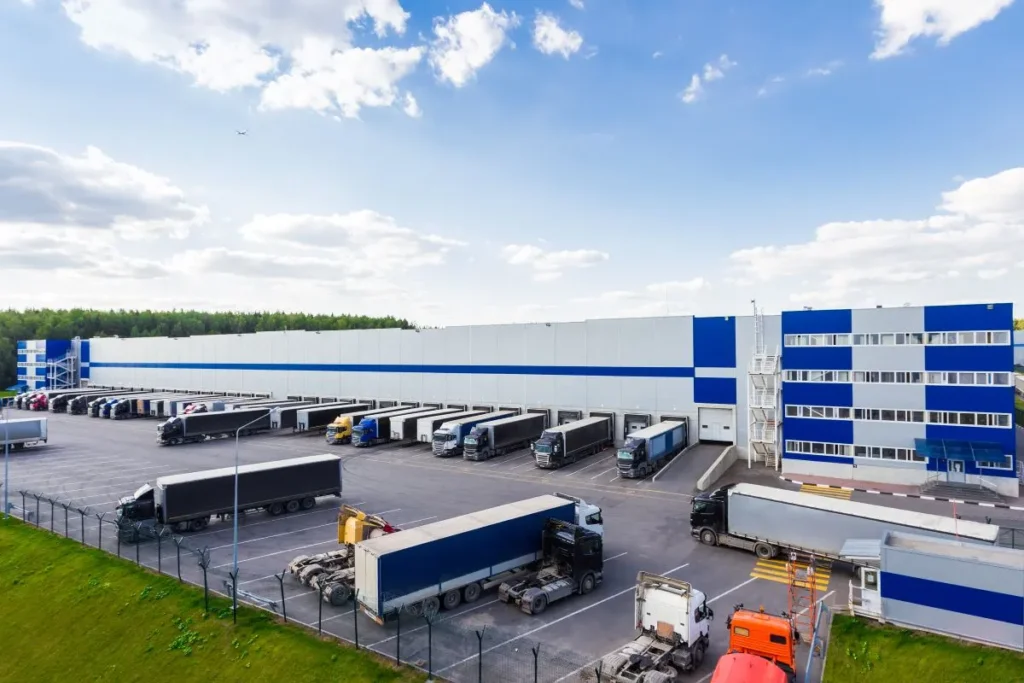The report reveals that the demand for warehousing and industrial space significantly slowed down in the first half of 2023 when compared to the same period in 2022.
In the twelve months leading up to the end of June 2023, total demand in mainland Europe amounted to 33.3 million square metres, marking a 27% decrease year-on-year. Between the second half of 2021 and the first half of 2022, a substantial 45.9 million square metres of space were leased in Europe.
However, it’s essential to remember that in the first half of 2022, we were still experiencing the aftermath of the pandemic’s growth, and the impacts of the conflict in Ukraine and the resulting economic slowdown were not yet as visible. Cushman & Wakefield attributes the decline to companies’ prolonged decision-making processes, which often involve waiting and postponing decisions during periods of economic uncertainty.
Nonetheless, it’s worth noting that, despite the clear decline, the level of annual demand at the end of the first half of 2023 still surpasses the figures from before the COVID-19 pandemic. During that time, the average annual demand was approximately 30 million square metres.
Interest in Central Europe
The largest markets, especially in Western countries such as Germany, France, and Great Britain, experienced the most significant year-on-year decline during the analysed period.
Year-on-year demand growth in the first half of this year was primarily observed in smaller markets and in Central and Eastern Europe. Bulgaria, Ireland, Romania, Hungary, and Slovakia led the way in year-on-year growth, with experts from Cushman & Wakefield suggesting that nearshoring is a significant factor.
When compared to the pre-pandemic period, an increase in demand can be seen in most markets, including Western ones. The most substantial increases compared to the pre-pandemic average were recorded in Romania, Bulgaria, and Denmark, with Hungary in fifth place and Poland in sixth. Germany and the Netherlands were the only countries analysed where demand was lower than the pre-2020 average.
Escalating Costs
Lease rates for warehouse space are also experiencing a faster average growth rate than before the pandemic. Between July 2022 and June 2023, the average rent increase for prime locations in Europe was 13.8%. In contrast, the five-year average before the pandemic was only 2.5%.
However, year-over-year, this 13.8% rate increase in the first half of 2023 is weaker than in the previous 12-month cycle. In the 12 months leading up to June 2022, rates had risen by 15.2% compared to the same period the previous year.
Since 2018, the highest growth in rental rates was recorded in logistics spaces in the United Kingdom, the Czech Republic, Hungary, Poland, and Germany. Rates on the islands had increased by approximately 50% since June 2018, with Central Europe seeing an overall increase of over 40%.
Rates in Central Europe are now comparable to those in Western Europe, with the five locations experiencing the highest price increases, including three from Central Europe. This aligns with the increased demand in Central Europe, which now exceeds that in developed Western economies.
Notably, the highest rates in Europe for prime locations are found in the UK, Scandinavia, Switzerland, and Bavaria. The broader Central and Southeastern Europe region is characterised by lower rates, though they are similar to those in Italy, Portugal, Belgium, and many places in France. While Bucharest is one of the most affordable cities in Europe, you’ll pay more for logistics space in Budapest than in Rome or Antwerp.
Some exceptions in the Central European region, such as Kraków and Prague, have prices for warehouse space comparable to those in the Ruhr area, the logistics and industrial hub of Germany, Frankfurt am Main, Rotterdam, and Stockholm.
Average rental rates for prime logistics locations (euro/sq m/year)

Source: Cushman & Wakefield
Poland’s Situation
Cushman & Wakefield experts anticipate a reduction in demand in the near future due to the ongoing economic slowdown. Demand is expected to stabilise in the fourth quarter of 2023 and the beginning of 2024, returning to pre-pandemic levels.
This slowdown also means reduced supply of logistics space and diminished developer activity, naturally resulting in increased rents, albeit at a lower rate than in recent years.
Market tension is growing as landlords contend with upward pressure arising from rising labour, fuel, and utility costs. However, as inflation levels decline, rental rates are expected to continue stabilising, according to Tim Crighton, Head of Logistics & Industrial EMEA at Cushman & Wakefield.
Unfortunately, there’s no good news for Polish tenants. The consulting firm anticipates that Poland will be among the countries where rate increases will be most noticeable, alongside Hungary, Slovakia, France, and Great Britain. France is projected to experience an average growth of 6.8% in 2023-24 and 1.2% in 2025-27. The cumulative growth for the CEE region is expected to reach 6.7% and 1.9%, respectively.
This text was originally published in Polish by trans.iNFO analyst Michał Pakulniewicz. Changes have been made to this English-language version to best address our global audience.









